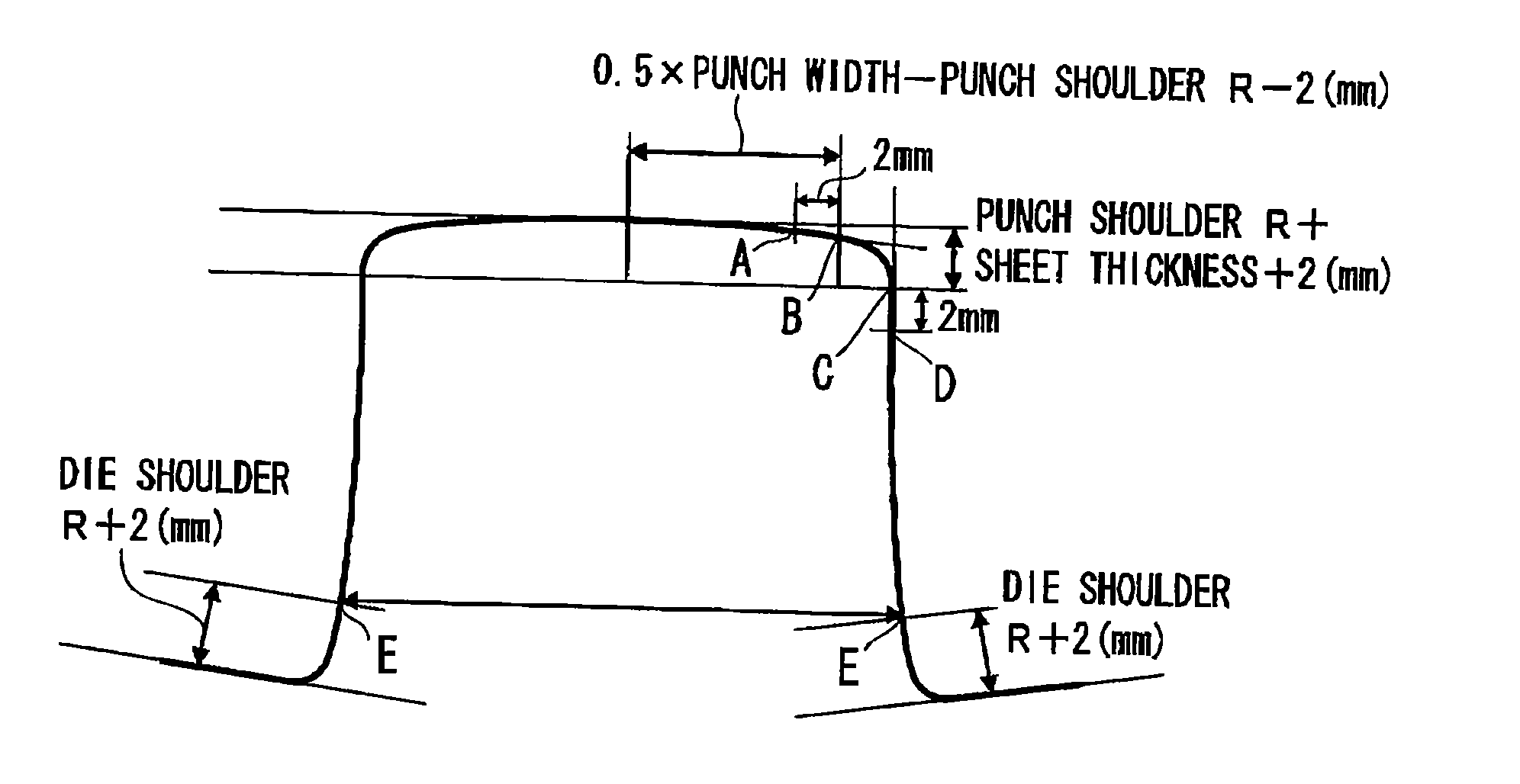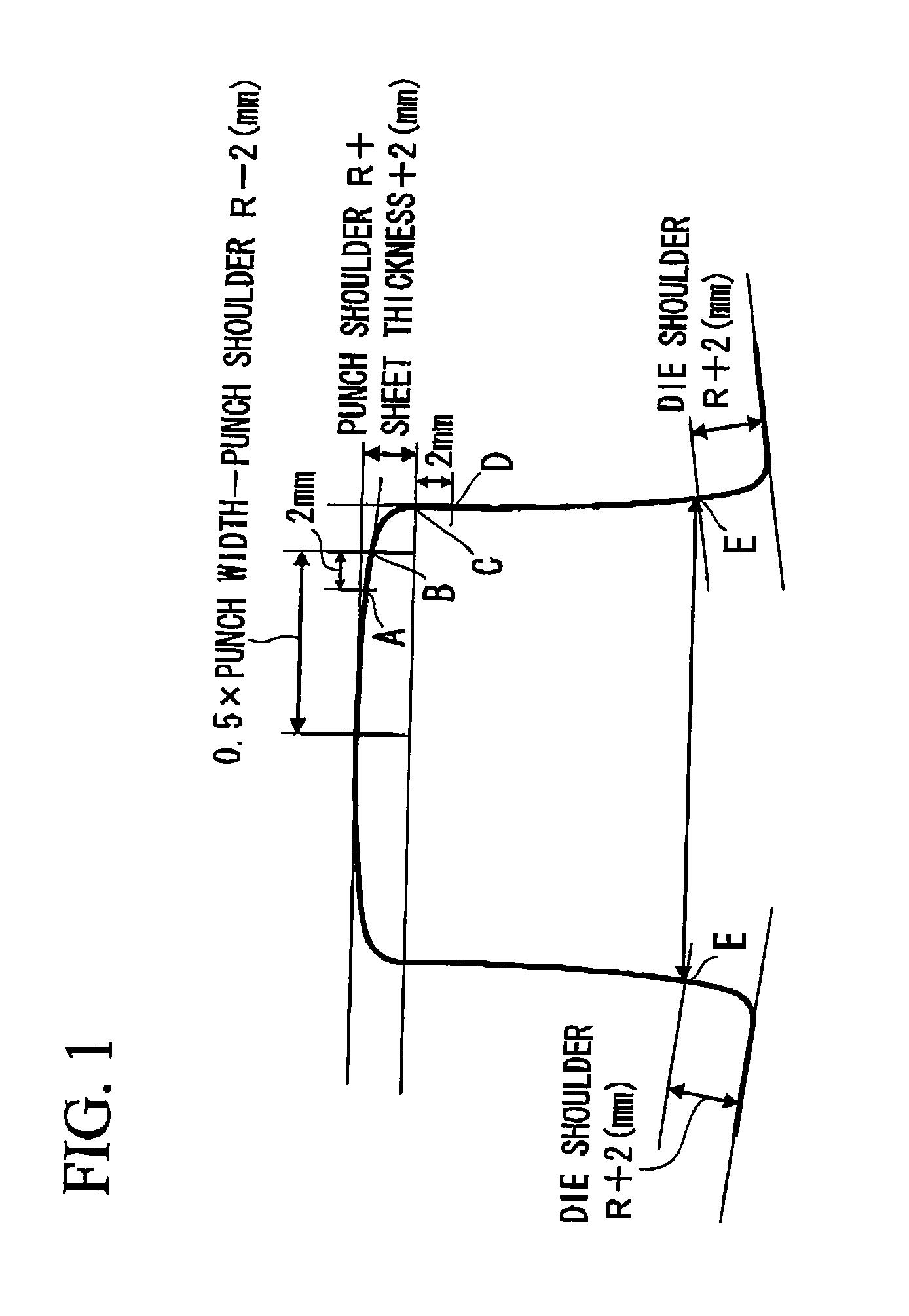Steel Sheet Having High Young's Modulus, Hot-Dip Galvanized Steel Sheet Using The Same, Alloyed Hot-Dip Galvanized Steel Sheet, Steel Pipe Having High Young's Modulus And Methods For Manufacturing These
a technology of young's modulus and young's modulus, which is applied in the field of steel sheets having high young's modulus, hot-dip galvanized steel sheets using the same, alloyed hot-dip galvanized steel sheets, and methods for manufacturing these. it can solve the problems of inability of steel sheets to fix into the proper shape, inapplicability, and major problems of steel sheets. , to achieve excellent young's modulus and excellent young's modulus
- Summary
- Abstract
- Description
- Claims
- Application Information
AI Technical Summary
Benefits of technology
Problems solved by technology
Method used
Image
Examples
first embodiment
[0067] The steel sheet of the first embodiment contains, in percent by mass, C: 0.0005 to 0.30%, Si: 2.5% or less, Mn: 2.7 to 5.0%, P: 0.15% or less, S: 0.015% or less, Ma: 0.15 to 1.5%, B: 0.0006 to 0.01%, and Al: 0.15% or less, and the remainder is Fe and unavoidable impurities. One or both of the {110} pole density and the {110} pole density in the ⅛ sheet thickness layer is 10 or more, and the Young's modulus in the rolling direction is more than 230 GPa.
[0068] C is an inexpensive element that increases the tensile strength, and thus the amount of C that is added is adjusted in accordance with the target strength level. When C is less than 0.0005 mass %, not only does the production of steel become technically difficult and cost most, but the fatigue properties of the welded sections become worse as well. Thus, 0.0005 mass % serves as the lower limit. On the other hand, a C amount above 0.30 mass % leads to a deterioration in moldability and adversely affects the weldability....
second embodiment
[0126] The steel sheet of the second embodiment contains, in percent by mass, C: 0.0005 to 0.30%, Si: 2.5% or less, Mn: 0.1 to 5.0%, P: 0.15% or less, S: 0.015% or less, Al: 0.15% or less, N: 0.01% or less, and also contains one or two or more of Mo: 0.005 to 1.5%, Nb: 0.005 to 0.20%, Ti: 48 / 14×N (mass %) or more but less than 0.2%, and B: 0.0001 to 0.01%, at a total of 0.015 to 1.91 mass %, with the remainder being Fe and unavoidable impurities. The {110} pole density and / or the {110} pole density in the ⅛ sheet thickness layer is 10 or more. The Young's modulus in the rolling direction is greater than 230 GPa.
[0127] The reasons for limiting the steel composition as above are described here.
[0128] C is an inexpensive element that increases the tensile strength, and thus the amount of C that is added is adjusted in accordance with the target strength level. When C is less than 0.0005 mass %, not only does the production of steel become difficult and costs increase, but the fatigue...
third embodiment
[0193] In the third embodiment, examples of a hot-dip galvanized steel sheet, an alloyed hot-dip galvanized steel sheet, and a steel pipe having high Young's modulus, that contain the steel sheets having high Young's modulus of the first and the second embodiments, and methods for manufacturing these, are described.
[0194] The hot-dip galvanized steel sheet has the steel sheet having high Young's modulus according to the first or the second embodiment, and hot-dip zinc plating that is conducted on that steel sheet having high Young's modulus. This hot-dip galvanized steel sheet is produced by subjecting the hot-rolled steel sheet after annealing that is obtained in the first and second embodiments, or a cold-rolled steel sheet obtained by performing cold rolling, to hot-dip galvanization.
[0195] There are no particular limitations regarding the composition of the zinc plating, and in addition to zinc it may also include Fe, Al, Mn, Cr, Mg, Pb, Sn, or Ni, for example, as necessary.
[...
PUM
| Property | Measurement | Unit |
|---|---|---|
| Temperature | aaaaa | aaaaa |
| Temperature | aaaaa | aaaaa |
| Temperature | aaaaa | aaaaa |
Abstract
Description
Claims
Application Information
 Login to View More
Login to View More - R&D
- Intellectual Property
- Life Sciences
- Materials
- Tech Scout
- Unparalleled Data Quality
- Higher Quality Content
- 60% Fewer Hallucinations
Browse by: Latest US Patents, China's latest patents, Technical Efficacy Thesaurus, Application Domain, Technology Topic, Popular Technical Reports.
© 2025 PatSnap. All rights reserved.Legal|Privacy policy|Modern Slavery Act Transparency Statement|Sitemap|About US| Contact US: help@patsnap.com



